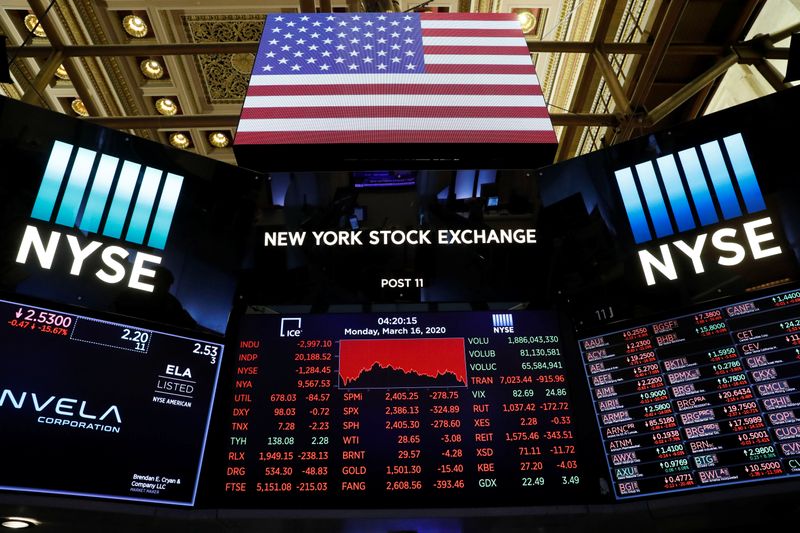By Medha Singh and Sanjana Shivdas
(Reuters) - Wall Street rebounded on Tuesday, following its steepest declines since the 1987 crash, as the Federal Reserve took more steps to boost liquidity in a market sapped by business and travel disruptions in the wake of the coronavirus pandemic.
The benchmark S&P 500 (SPX) was up 5% after the central bank relaunched a financial crisis-era purchase of short-term corporate debt.
The move to buy back Commercial Paper follows several emergency measures taken by the U.S. central bank on Sunday, including slashing interest rates to near zero, which sent the main indexes tumbling 12% on Monday.
That was the benchmark S&P 500's (SPX) third-biggest daily percentage drop on record, beaten only by the 1987 rout and the Great Depression crash in 1929 as investors fretted over a looming recession.
"The question is how deep the recession will be; it all depends on the fiscal stimulus of the governments around the world," said Elliott Savage, portfolio manager of the YCG Enhanced Fund in Austin, Texas.
"Fiscal stimulus and seeing coronavirus start to peak - those are the two things that investors are most focused on because they are going to tell you what the recovery is going to look like."
The Trump administration is pursuing a massive $850 billion stimulus package to buttress an economy reeling from the health crisis that has brought major cities in the United States to a standstill.
The head of the U.S. securities regulator on Monday said that U.S. markets should stay open despite intense volatility, quashing speculation that the government might shut down the country's exchanges.
At 12:29 a.m. ET, the Dow Jones Industrial Average (DJI) was up 745.20 points, or 3.69%, at 20,933.72, while the S&P 500 (SPX) was up 116.44 points, or 4.88%, at 2,502.57. The Nasdaq Composite (IXIC) was up 358.52 points, or 5.19%, at 7,263.11.
All the 11 S&P sectors were trading in the black, led by the defensive utilities (SPLRCU), real estate <.SPLRCR> and consumer staples (SPLRCS) rising between 6% and 9.8%.
Healthcare stocks were another bright spot as Pfizer Inc (N:PFE) gained 5.2% after signing a deal with Germany's BioNTech SE <22UAy.F> to co-develop a potential coronavirus vaccine.
Regeneron Pharmaceuticals Inc (O:REGN) jumped 12.3% after the company said it had identified antibodies to potentially treat COVID-19.
Boeing Co's (N:BA) shares tumbled as much as 22% to a more-than-six-year low on Tuesday following a rating downgrade that reflected its worsening cash flow due to the extended grounding of its 737 MAX jet and the blow from the coronavirus pandemic.
Advancing issues outnumbered decliners by a 1.70-to-1 ratio on the NYSE and by a 2.30-to-1 ratio on the Nasdaq.

The S&P index recorded seven new 52-week highs and 199 new lows, while the Nasdaq recorded five new highs and 768 new lows.